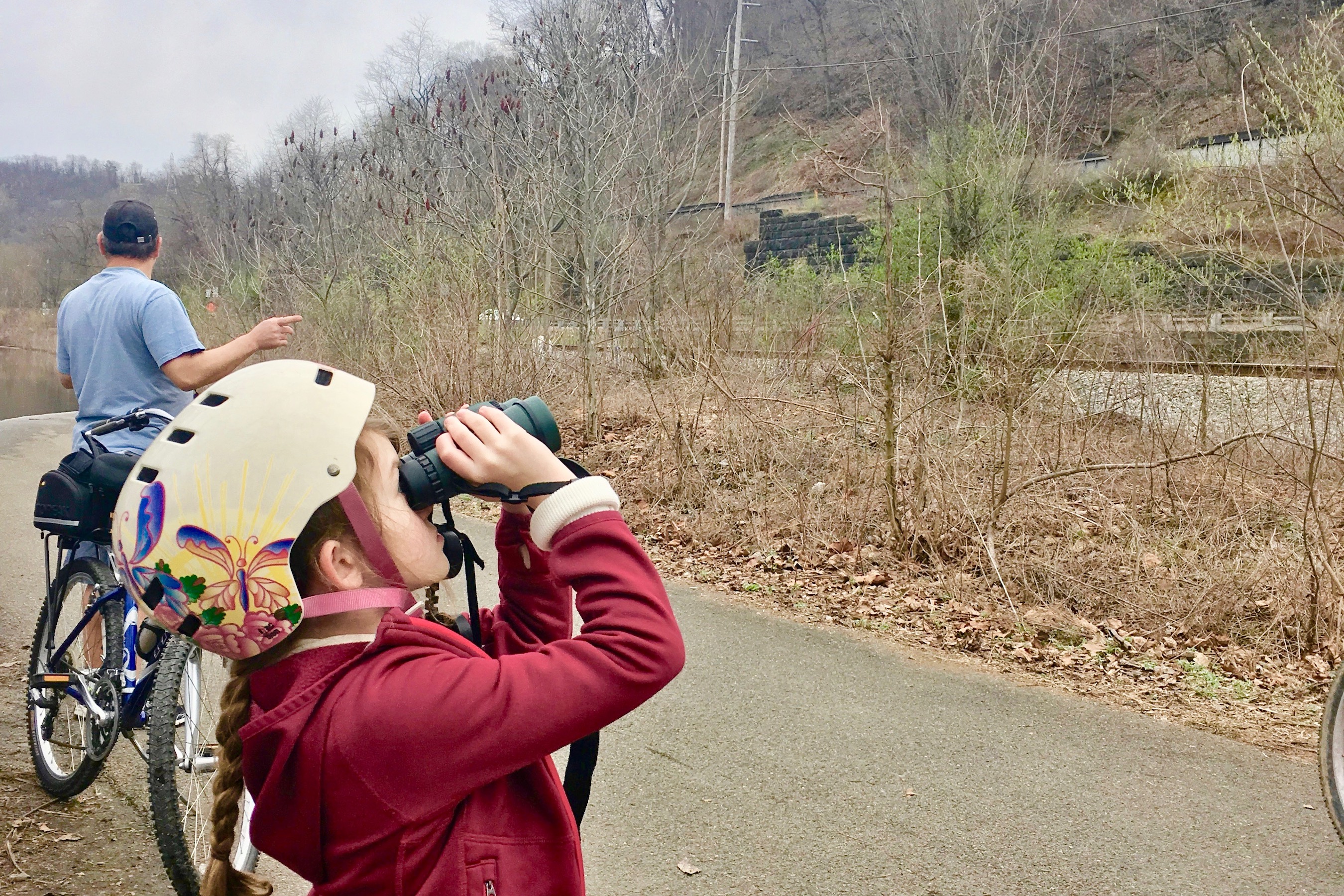Pittsburgh is #26. And that’s not too shabby for its first year as a competitor in the City Nature Challenge.
“The City Nature Challenge is really just kind of a fun competition between cities to see who could get the most observations on the website, iNaturalist.org,” says Matt Webb, the organizer of the Pittsburgh challenge.
LISTEN: “Pittsburgh Competes in International Nature Challenge. Science Wins”
iNaturalist is a citizen science platform where people can upload photos from their phone through the app, and learn about what they’re looking at in real time through an AI feature that identifies what they’ve seen. Then scientists can use these data in their research
“iNaturalist kind of acts like a big data set of all kinds of nature. Plants, animals, insects, and even protozoa and fungi on there,” Webb says.

Matt Webb logged 379 observations during the four-day City Nature Challenge. Photo: Kara Holsopple
Over the four days of the challenge Webb and about 160 others in Western Pennsylvania took photos of species like broom moss and eastern chipmunks, then uploaded the photos through the iNaturalist app. Each photo counts as an “observation.”
Webb is the urban bird conservation coordinator at the Carnegie Museum of Natural History. At nearby in a tree-studded corner of Pittsburgh’s Oakland neighborhood, he demonstrates how it works.
“So there are some purple flowers right over here. And this kind of thick, round leaf associated with them, so I’ll try to get a good photo of that,” Webb says as he crouches down close to the ground to get the shot.
“It automatically put in the date and the time in the exact location where I’m at from the GPS on my phone,” Webb says. “So I’ve clicked ‘species search’ and now the AI has taken over and it’s just searching for what it might be.”
iNaturalist says it’s of the genus Glechoma.
“Then it gives the top 10 species suggestions, and I know from experience that this plant is actually called ground ivy,” Webb says. “I just hit the check mark, it identifies it at that, and I submitted by hitting that check mark.”
Then the identification will verified by other users, which helps keep the data clean.

Invasive garlic mustard (alliara petiolata) was a commonly observed species. This one was spotted and logged by Christopher Tracey.
Webb logged 379 observations alone during the challenge. One of the most observed species in the Pittsburgh area was invasive garlic mustard.
“And you know, that could be looked at as an unfortunate picture of our nature here in Pittsburgh, but I really think what it comes down to is that it’s blooming right now,” Webb says.
Plus, Webb says, land managers and conservationists might want to know where the pesky plant is cropping up on the landscape. So capturing its presence through iNaturalist could be useful.
The City Nature Challenge started just two years ago between friends at the Los Angeles County Museum of Natural History and the California Academy of Sciences in San Francisco. Last fall, Webb met someone from the Los Angeles museum at a conference, and got Pittsburgh involved, since he had started to use the iNaturalist app as a hobby.
This year, cities from Miami to Mumbai participated. Though Webb knew Pittsburgh wouldn’t get the over 40,000 observations of San Francisco, he was at least hoping to beat out Denver, which just squeezed past Pittsburgh’s 4,389 observations. But Webb says he’ll be back at it for next year’s challenge, and during the time in between.
“It was just fun getting out taking pictures of all the things that I might just pass by during my regular day.”
###

